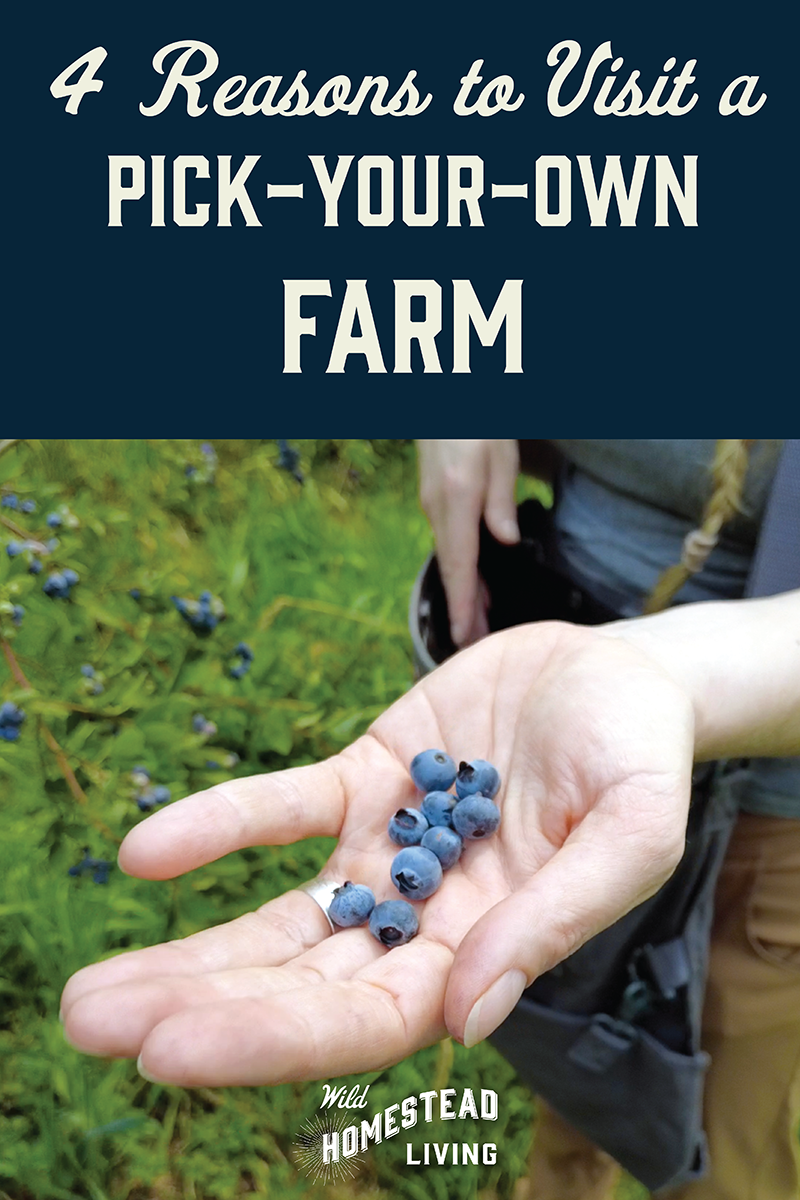4 Reasons to Visit a Pick-Your-Own Farm Now
We want you to know if you buy something using the retail links in our posts, we may earn a small commission (at no extra cost to you). We will never recommend anything we don’t believe in. Not for all the butter in Sweden. You can read our full policy or contact us if you have questions.
Do you have dreams of growing your own food or harvesting it in the wild? Even if you can’t quite swing those things yet, you can still create your own farm-to-table experience! Wherever you live, chances are there are farms within driving distance where you can pick your own produce. In addition to the term pick-your-own, some other common names for these farms are u-pick, you-pick, and PYO.
Depending upon your growing or gardening zone, there’s something available in every season. This is fun, earthy wholesome fun for the family. Some of my earliest memories are picking strawberries at Bell’s Farm on Whidbey Island; I’m certain this played a big part in longing for the homesteading life we lead today.
In this article I’ll cover some of our best advice about visiting a pick-your-own farm. You can also download a FREE chart of the most common u-pick crops on our website.
Watch “4 Reasons to Visit a Pick-Your-Own Farm Now” on Vimeo >
Here are 5 Reasons to visit a Pick-Your-Own Farm now, wherever you live and wherever you are in your sustainability journey.
Connect with Nature
Before we moved to the country, one of our favorite reasons to visit a PYO farm was the chance to connect with nature. Whether it was being surrounded by green, the sounds or smells, a day spent in the rural parts of our county was always soothing. Even though we now live only about a mile from our favorite blueberry farm, it still feels great to spend an afternoon among the bushes, enjoying the local sights and sounds.
2. Save Money
It’s often far more affordable to buy fruits and vegetables at a u-pick farm. Why? You are doing the hard work of picking the ripe crop. When you purchase food at the grocery store or even farmer’s market, the farmers have had to pay laborers to do this job, and they pass the cost on to you.
One great advantage of this cost-savings is that you can buy in larger quantities without breaking the bank. Picking your own creates a wonderful opportunity to preserve the harvest yourself by freezing, dehydrating, or canning the abundance.
3. Support Local Farms
In my experience, many PYO farms are small multi-generational farms. While they may have started out 100 years ago as a thriving local business, many of them find it impossible to compete with big agriculture; and running a farm is not cheap. We’ve talked with many farmers who have only been able to keep the family farm by operating as PYO.
Even though you often pay far less per pound at the PYO farm, the farmers often make more money off the crops. The reason is that by purchasing directly, the middlemen are cut out, meaning the profits don’t have to be divided along the supply chain.
4. Get Comfortable Harvesting Your Own Food
Getting familiar with how fruits and vegetables grow on the vine is a wonderful learning experience. There’s nothing like gaining knowledge hands-on, which is just what you get by visiting the you-pick farm. This is especially helpful if you are harvesting a crop you want to grow one day. You can learn what healthy plants look like and get a sense for when the crop is ripe and ready.
Harvesting crops at a you-pick farm is also a great step towards wildcrafting, or harvesting wild plants. Even if you're picking a species you wouldn’t find in the wild, it’s good practice towards building this skill.
Common Questions and Quick Tips about U-Pick Farms
How do you find a u-pick farm?
Many small farms don’t have websites, but there are still a few ways you can find them on the internet. A quick search for, “pick your own <fill in the crop> near me” will bring up some options. If you are on Facebook, that’s another great place to search. In our experience many small farms have pages that are updated there. The USDA also keeps lists. You can find them through a search or by contacting your local agricultural extension office for more information.
Once you find a farm, it’s a really good idea to make sure you have the most current status about their crops and hours. Since many of these are small family farms, they might have limited hours. And since they are at the mercy of nature, the harvest season can vary greatly. So make sure to check ahead of your visit.
How do you know if the u-pick farm is organic?
Organic certification is lengthy, complicated, and expensive process. If this is important to you, get in touch with the farm directly and ask about their agricultural practices. Most farmers are happy to talk about their practices. For example, we had a lengthy discussion with our local farmers about their recent soil testing.
What should you bring to the u-pick farm?
Planning for a trip to the u-pick is kind of like planning for any time spent outdoors. You want to make sure to bring things for your own comfort, like water and sturdy shoes. Depending upon the season, you might also want to bring sunscreen and a hat.
I usually pick in very large volumes and preserve the harvest for the coming year, so I usually bring my own containers. Most farms have reusable containers to use for picking and cardboard containers to take home your haul. But it’s a good idea to double check ahead of time as every farm is different.
Most farms these days take credit cards, but it’s a good idea to have cash on hand too, just in case. Credit card processing often has associated fees, so paying in cash is another way to maximize your support for local farms and agricultural communities.
What are your tips for a trip to the u-pick farm?
Do you have a favorite crop to harvest or suggestions for making the most of a visit to one of these farms? Or how about a memory from one your past trips? Share them in the comments section below!

